Haworthia turgida is a petite succulent known for its translucent “windows” within the leaves. This gorgeous little plant is also sometimes referred to as Haworthia laetevirens, but it’s not to be confused with lookalike Haworthia cooperi.
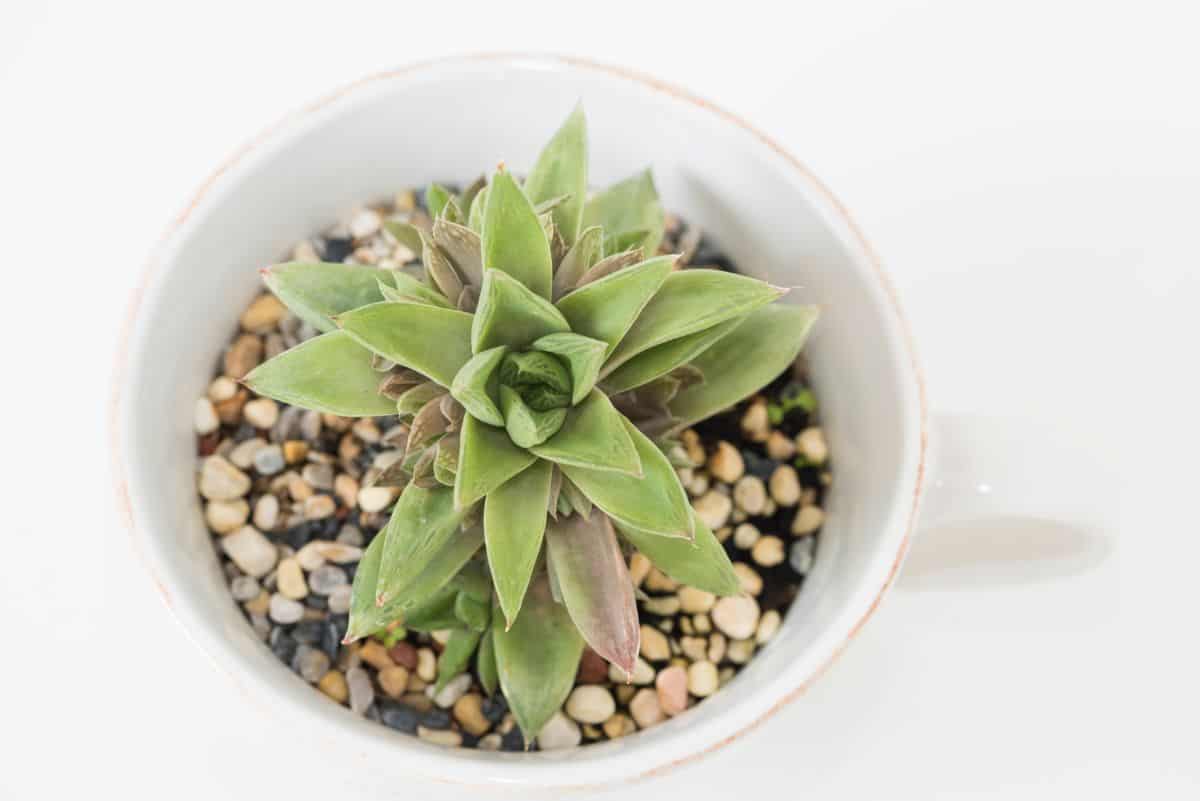
H. turgida is native to the Cape Provinces of South Africa. In its natural habitat, this plant grows in dense clusters on rocky cliffs made of limestone or slate.
Jump to:
Haworthia turgida Appearance
| Name: | Haworthia Turgida |
| Soil: | Well-draining soil containing coarse sand, gravel, or perlite |
| Blooming: | Spring |
| Light: | Bright, indirect light |
| Water: | When the soil is dry out |
| Propagation: | Offsets, cutting and seeds |
Haworthia turgida is a rosette-shaped succulent that typically stays less than 4 inches in diameter. The leaves are fleshy and recurved with a glassy look to them.
When grown in bright light, the leaves of H. turgida flush red at the tips. The tips of the leaves are also striped with translucent “windows”. These windows allow the plant to access more light in low-light environments.
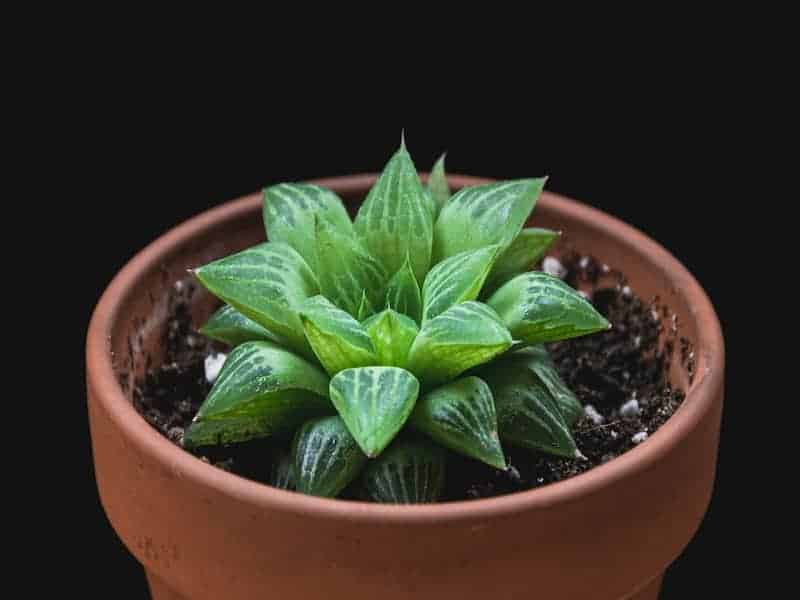
Buy it from:
In spring, Haworthia turgida produces a single upright stem that will eventually sprout tiny, white flowers. The flowers are tube-shaped and typically only last a few days. Many gardeners find the flowers to be somewhat unattractive compared to those of other species of succulent.
Cultivars
There are two common cultivars of H. turgida. They are not as common as the original variety, but they possess their own unique charm. The differences between cultivars of this species are subtle but are obvious to the discerning eye.
Haworthia turgida var. longibracteata
This variety closely resembles the original in terms of size and color. However, there are small differences in leaf shape. The leaves of this variety are more erect and angular than the leaves of Haworthia turgida.
As with the original variety, you can expect tiny white flowers to appear in the spring atop an upright stem. These flowers are also tubular and white.
Haworthia turgida var. suberecta
This variety is easily distinguished from the other two by its rounded leaf tips. The leaves are densely packed, leading to an almost stemless appearance. They are the same color as the original, with translucent stripes and more speckles.
Though the leaves are generally a paler green than the original variety, Haworthia turgida var. suberecta also flushes red or pink when stressed by heat and drought.
This variety is slightly larger than the original, reaching up to 6 inches in diameter. In the spring, you can expect to see brownish-white flowers atop a single wiry stem.
Haworthia turgida Care
If you’re looking for a succulent that can be cared for by even the most inexperienced gardener, look no further than Haworthia turgida. These succulents are notoriously easy to care for, due in part to their low light requirements.
No products found.
They are slow-growing plants, but they require little beyond the basics needed by any succulent. Haworthia are also non-toxic, so they’re ideal for gardens frequented by children, pets, and other animals.
Water
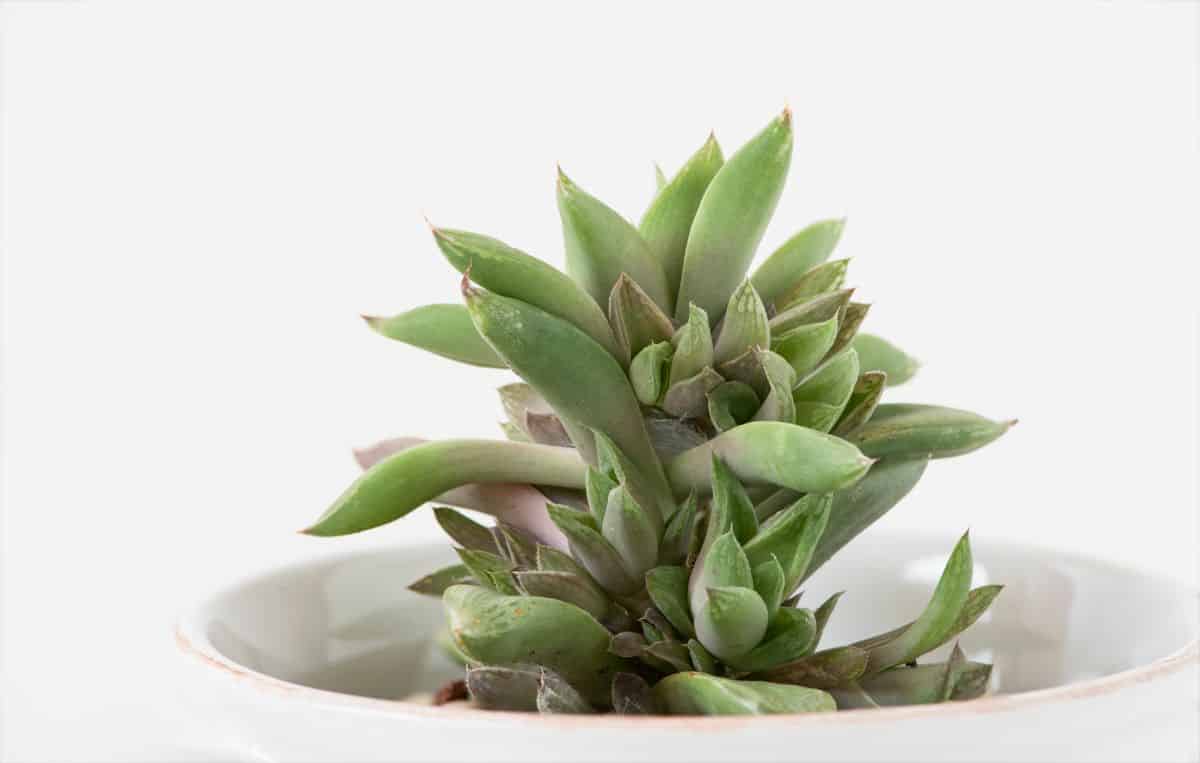
Haworthia turgida should be watered deeply enough for water to run out of the bottom of the pot, but the soil should always be allowed to dry out before watering again. Most succulent gardeners will recognize this watering method as the preferred technique of most species of succulent.
As with most succulents, Haworthia should never be kept in overly wet soil or standing water. Too much moisture will eventually lead to root rot, which will likely result in the death of the plant.
Signs of overwatering can include mushy or translucent leaves. The leaves of H. turgida do have translucent windows, but overwatering will cause the entire leaf to take on a translucent appearance. The bottom leaves may also yellow and drop off.
If you need help saving an overwatered plant, be sure to read our guide.
To avoid overwatering, it’s crucial to check the moisture of the soil before pouring a single drop of water. If you aren’t using a soil moisture meter, you’ll need to stick your finger a few inches into the soil near your succulent.
If the soil feels moist, don’t water yet. If the soil feels dry, you can go ahead and water the plant until the excess drains from the bottom of the pot. By checking the soil each time you water, you can be sure you aren’t accidentally overwatering your succulents.
Light
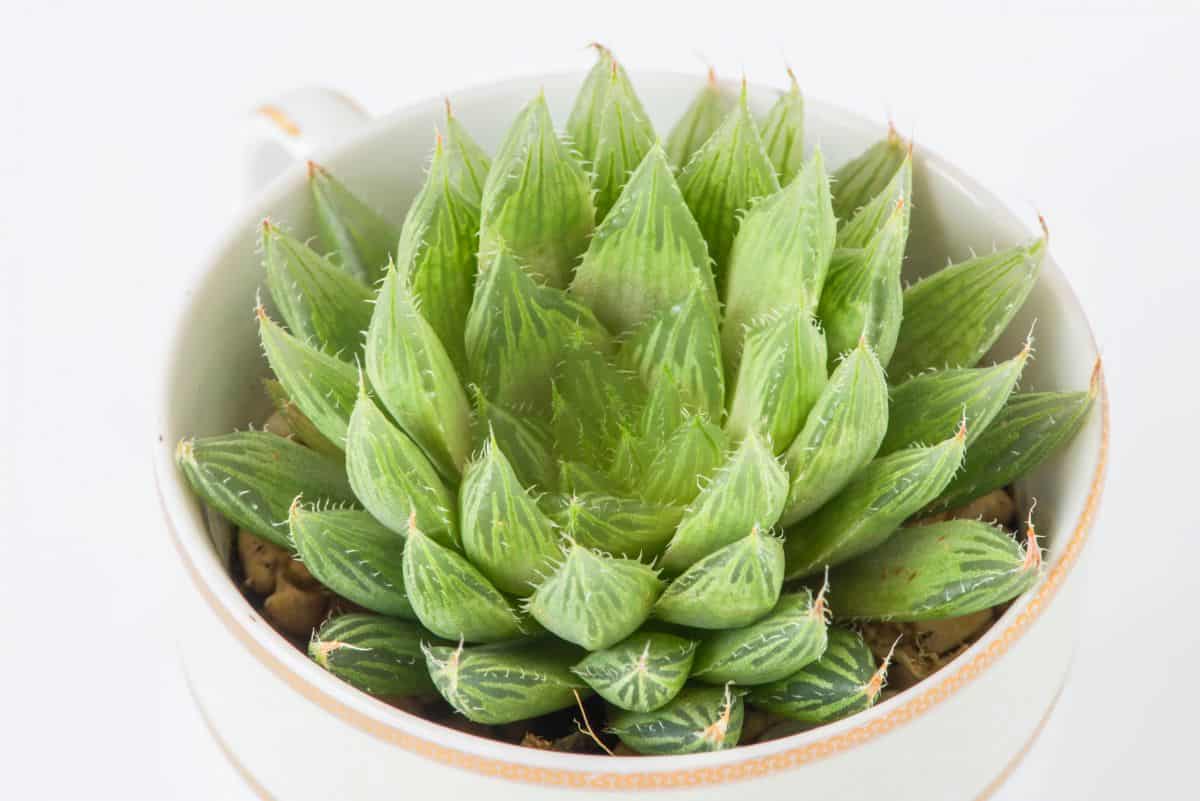
Haworthia turgida grows best in bright, indirect light. When grown in bright light, the leaves often flush red, which many gardeners find appealing. Placing your succulent near an east or west-facing window should provide it with plenty of light.
However, this succulent also grows well in low-light environments thanks to the translucent leaf windows. If you suspect that your indoor space provides too little light for your succulents, you may soon see your plant becoming etiolated or stretched out.
The solution to this problem may be indoor grow lights. Grow lights will provide your plants with plenty of light, regardless of their proximity to a window.
Haworthia turgida can also be grown outdoors if the climate allows. However, full sun should be avoided. This succulent does best in filtered light or partial sun. It’s best to keep it out of direct light during the hottest parts of day.
Temperature
As with many species of succulent, Haworthia turgida does not tolerate frigid weather. If you keep your succulents outdoors and suspect temperatures may drop below freezing, bring them inside until it warms up.
Though they can’t handle extreme cold, these plants are capable of tolerating high heat. During the hottest part of the summer, H. turgida enters a state of dormancy.
This slows down the plant's growth enough to conserve both moisture and energy until temperatures reach a more comfortable range. During this time, you’ll need to be particularly careful about your watering schedule to avoid accidental overwatering.
Soil
Since Haworthia turgida grows wild on rocky cliffsides, it’s easy to understand the type of soil it might prefer. Well-draining soil containing coarse sand, gravel, or perlite is ideal. Soil heavy in clay or peat moss should be avoided to prevent water retention, which can lead to root rot.
Commercial cactus or succulent soil is often a great place to start. These soil mixes typically contain larger particles that promote both drainage and air flow, which are essential to healthy succulents.
Of course, if you prefer to do things yourself, you can start with commercial cactus soil and adjust accordingly. Or you can start from scratch and build your ideal succulent soil mix from your own choices of ingredients.
Propagating Haworthia turgida
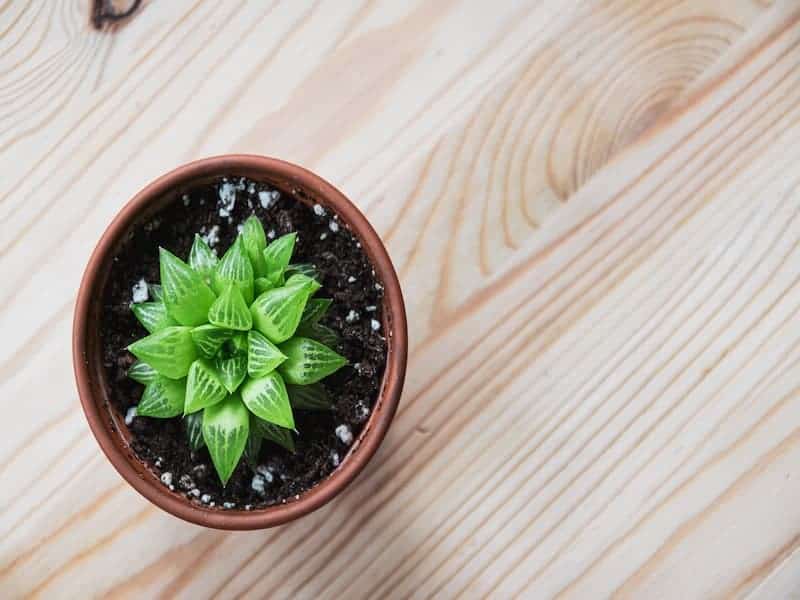
Not only is Haworthia turgida easy to grow, it’s also incredibly easy to propagate. As this is a clumping species of succulent, offset removal is the most common method of propagation.
However, growing this plant from cuttings and even seeds is a relatively easy process. Just remember that H. turgida is a slow-growing plant, so don’t expect immediate results.
Offsets
Offset removal is by far the easiest method of Haworthia propagation as all you have to do is separate individual plants from the existing clumps and give them their own container.
Offsets, or pups, can be removed by gently pulling them from the soil by holding them at their base near the soil. You can also separate them using a sharp knife, but generally, this isn’t necessary.
The offsets will need to dry out for a few days to allow any wounds to heal. This prevents any risk of infection by bacteria or fungus once they are introduced to soil in their new pot.
After the offsets have calloused, simply plant them in their own containers and treat them just as you would a mature Haworthia.
Cuttings
Haworthia turgida can also be propagated with stem or leaf cuttings. Taking a stem cutting is also an ideal way to recover a plant that has stretched out due to inadequate light. Leaf cuttings are a great way to make use of any leaves that may accidentally be knocked off during repotting.
When taking a cutting, be sure to use a clean, sharp pair of scissors or shears. Using sharp tools will help prevent any damage to your cuttings or mother plant.
Once you’ve collected your cuttings, you’ll again need to give them a few days in the open air to allow their wounds to callous.
Before planting, you can also dip the cuttings into rooting hormone powder to encourage faster root growth. This isn’t a necessary step, but it’s helpful for impatient gardeners.
After planting, you should begin to see tiny roots appearing from your cuttings within a few weeks. Once the roots appear, you can begin watering your cuttings as normal.
Seeds
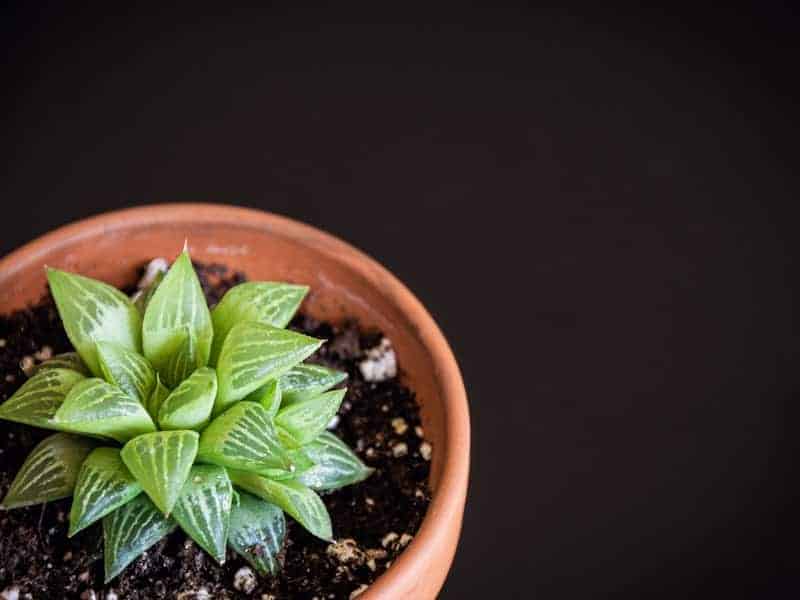
Growing Haworthia turgida from seeds is the slowest method of propagation, so be prepared to wait a while until you have mature plants. Haworthia seeds can be collected from your own plants or you can purchase them on the internet.
Many gardeners recommend soaking the seeds prior to sowing to encourage better germination. When you’re ready to sow, be sure to use the same fast-draining soil you use with mature succulents.
You’ll need to keep the seeds moist until seedlings appear, so it’s important to keep the soil covered to help retain moisture and humidity. However, the soil shouldn’t be overly wet as that may cause the seeds to rot.
Within a few weeks, you should see tiny Haworthia seedlings breaching the top of the soil. At this point, you can uncover the seedlings and treat them normally. It’s best to wait until the seedlings are a sturdier size before transplanting to prevent any accidental damage from handling.


